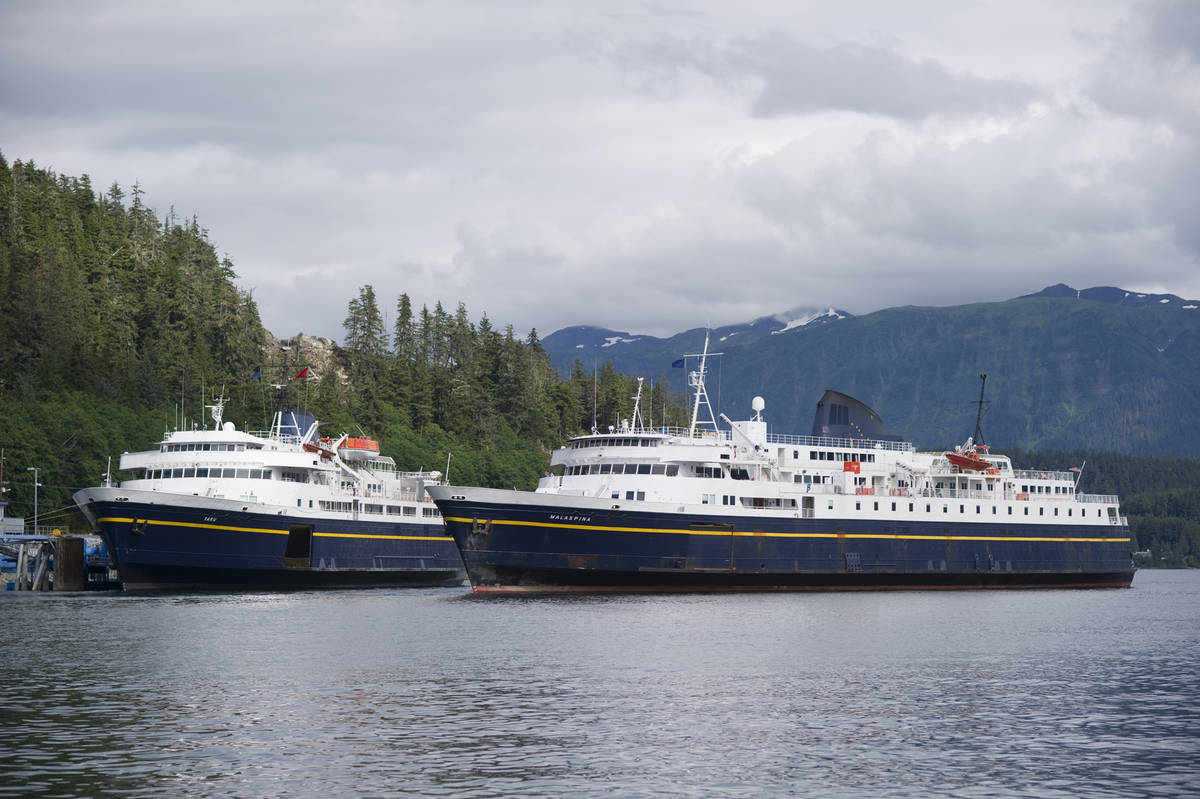The MV Malaspina will stop sailing in December, according to Robb Arnold, regional vice chair of the Inland Boatman’s Union of the Pacific.
Arnold said the Department of Transportation and Public Facilities had cited high maintenance costs as the reason for retiring the ship. Arnold said the vessel needed repairs to reinforce one of its decks.
In an email, DOT spokesperson Meadow Bailey said that the repairs would cost roughly $16 million, beyond the available budget.
“The M/V Malaspina will be placed in unmanned, long-term layup status in Ketchikan, Alaska effective Jan. 10, 2020,” the DOT said in a release Thursday.
The release said the Malaspina was scheduled for overhaul this winter, but that an investigation into the ship’s condition showed extensive steel replacement was needed. Those repairs “could not be completed at this time,” the release said.
There will be no impact on the AMHS winter schedule according to the release and, “no long-term decisions have been made at this time regarding the future of the vessel.”
The Malaspina was built in 1963 and was one of the three original ships in the Alaska Marine Highway System fleet. “The Mal,” as its known to its crew, is designed to carry 450 passengers and approximately 83 twenty-foot vehicles, according to the AMHS website.
In February, Gov. Mike Dunleavy proposed cutting the ferry system by 75 percent, or $98 million dollars. Those cuts sparked outrage and sent many ferry supporters into the streets, demonstrating in support of funding for ferries.
[Riding the ferry will cost you more — you just may not know it.]
The governor’s cuts would have eliminated winter service entirely, leaving many coastal communities which rely on AMHS for goods and transportation without ferry service from Oct. to June. Funding was eventually appropriated and a reduced winter schedule was released by DOT.
During the summer’s special session, the Alaska Legislature voted to appropriate $5 million to provide two winter voyages to the city of Cordova, but that money was vetoed by the governor in his final budget.
The state had spent much more on other vessels, Arnold said, and that the Malaspina was one of the AMHS’ more reliable ships.
“They spent close to $60 million on the Matanuska,” Arnold said. “This is a very reliable vessel, (it) gets the best fuel efficiency. The Mal does not break down.”
Arnold was concerned about the loss of work hours and potential loss of experienced crew.
“There’s about 48 crew members on that boat,” he said. “If people don’t work and they’re not guaranteed work, they’re going to look for other work.”
The state had spent money to train those workers, Arnold said, expressing concern that there might not be enough staff on hand once the ferry schedule picks up in the spring.
He said that the economic costs of cutting the ferry system were yet to be felt but that businesses and communities in Southeast would start to feel the effects.
“We’re an international highway and I don’t think people realize that,” Arnold said. “We’re a connector, we connect the roads. I think if you get rid of the connection, the communities are going to be severely impacted.”
The Dunleavy administration has maintained throughout its tenure that the state’s budget was unsustainable and that cuts need to be made in order to tackle Alaska’s $1.6 billion deficit. In pursuit of that effort Dunleavy reduced state spending by $650 million following an extremely contentious special legislative session.
The governor had promised to reduce the state’s deficit without new taxes or reducing the Permanent Fund Dividend. Dunleavy’s former Budget Director Donna Arduin had called ferries an “inefficient system,” and hired a consultant to explore other models for AMHS, including privatization.
• Contact reporter Peter Segall at 523-2228 or psegall@juneauempire.com.

